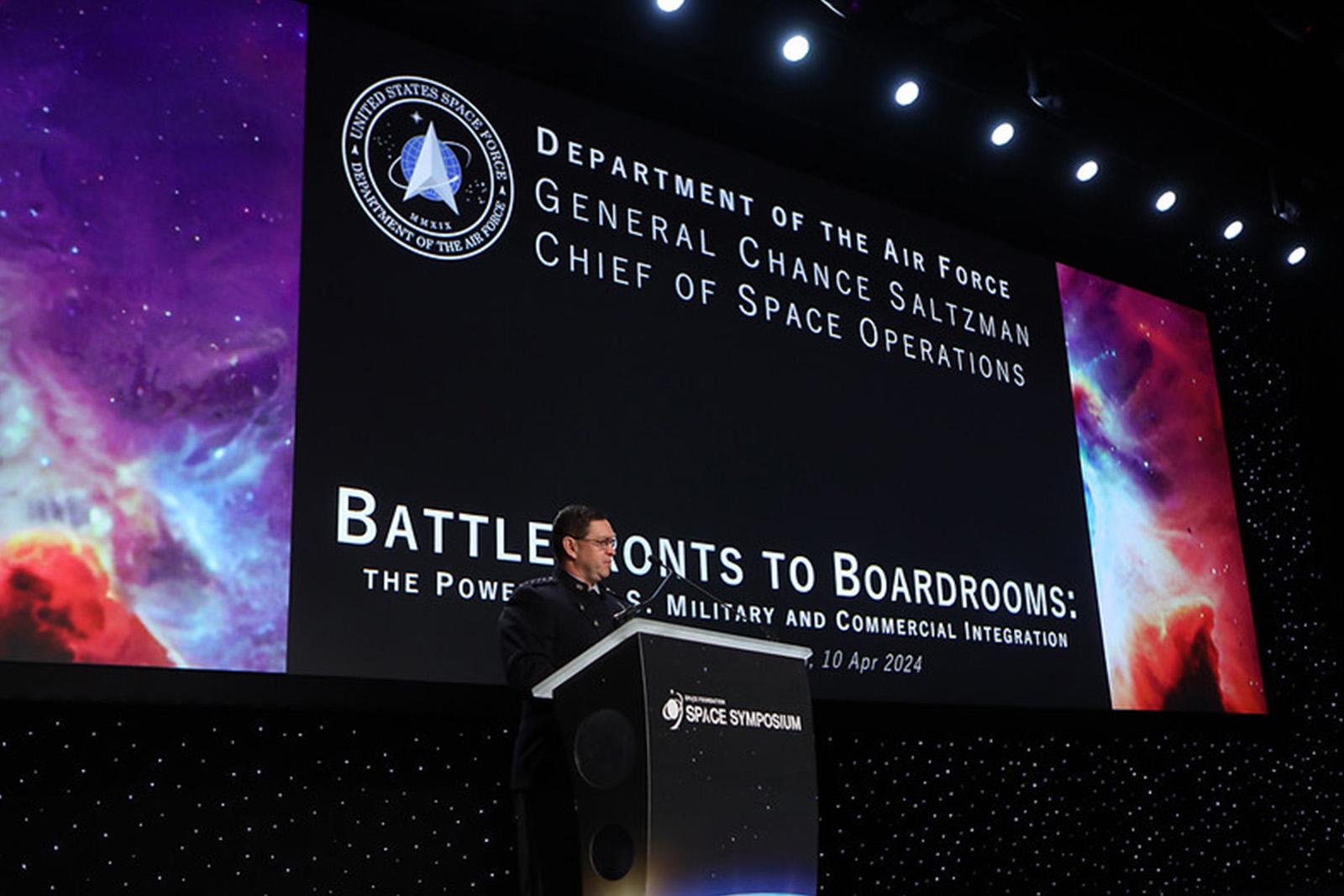
Chief of Space Operations Gen. Chance Saltzman speaks April 10 at the Space Symposium in Colorado Springs.
COLORADO SPRINGS—The U.S. Space Force is using its long-awaited commercial services strategy to let industry know which missions it wants to prioritize and how they will be evaluated, but without boxing in companies with explicit requirements.
The service on April 10 released the strategy during the 2024 Space Symposium here after months of revisions and input from industry. It follows the rollout of a similar but broader, Pentagon-wide Commercial Space Integration Strategy announced earlier this month.
Chief of Space Operations Gen. Chance Saltzman, speaking to reporters on the sidelines of the conference, said it is not his goal for the document to be a panacea, or to specifically outline how much money the service wants to give to industry—which “to some degree is what they wanted,” he says.
“What the strategy does [for us is] that . . . deliberate planning [so] that we know exactly the kind of things we think are suitable for commercial services, and where we think there are inherently governmental functions that need to be performed by organic capabilities,” Saltzman says.
The document does identify the specific missions it wants to focus on for increasing commercial capabilities. The priority missions for new commercial integration are tactical surveillance, reconnaissance and tracking (TacSRT); space-based environmental monitoring; precision navigation and timing; and space access, mobility and logistics (SAML). Additionally, the Space Force wants increased integration with satellite communication, launch and space domain awareness.
At the same time, the service says the missions of missile warning, combat power projection, electromagnetic warfare and nuclear detection monitoring need to remain government-only.
The strategy outlines general, near-term goals for some of the missions. For example, for SAML, the Space Force wants more launch services, flexible launch options, in-space servicing and tactically responsive space capabilities. This will build on national security space launches, with increased operations with allies and partners.
For TacSRT, the Space Force wants broad surveillance services, planning products, data, transmission and analytic capabilities from both companies while also partnering with intelligence agencies.
To meet its aims, the service outlines four efforts: increased transparency, operational and technical integration, risk management and outlining future goals. To be more transparent, the Space Force pledges to actively seek more commercial solutions by understanding market trends and finding ways to mitigate barriers to working with the military, while identifying which capabilities it can bring on from industry.
To help companies understand risk, the Space Force will establish a new process to share threat information with companies, including domain awareness data and cybersecurity threat information. Looking to the future, the Space Force will establish new processes to look across commercial offerings from both traditional and nontraditional companies while increasing partnerships with groups such as the Defense Innovation Unit, SpaceWerx and AFWerx.
Speaking with reporters at the symposium, Col. Rich Kniseley, the senior materiel leader with Space Systems Command’s Commercial Space Office, said the broad goal is to avoid an “overall peanut butter spread” of Space Force intent, but to be more deliberate in the service’s outreach to industry. There also is an implementation phase of the strategy currently in the works, which will go more into the funding plans.





